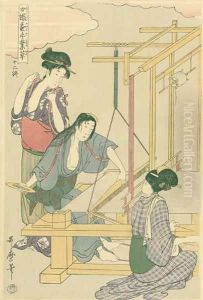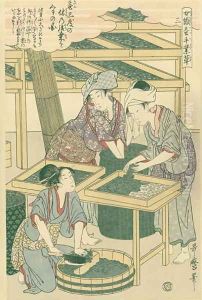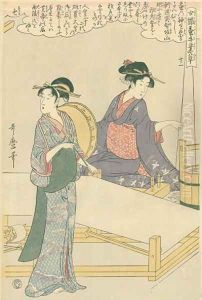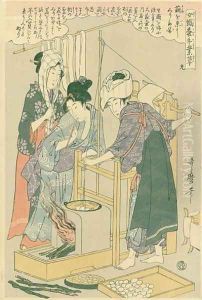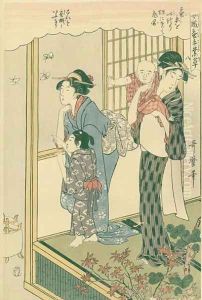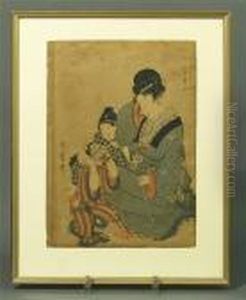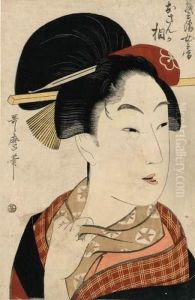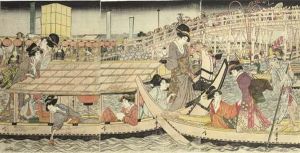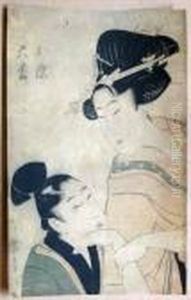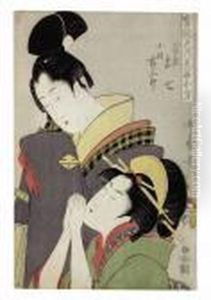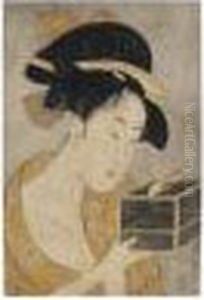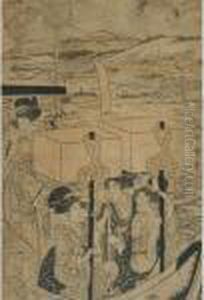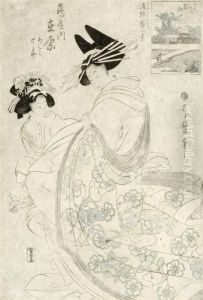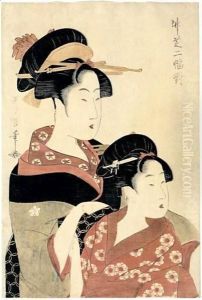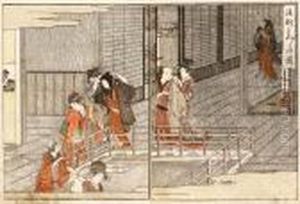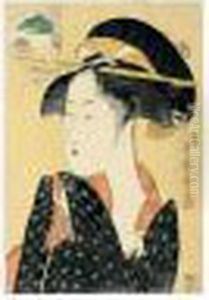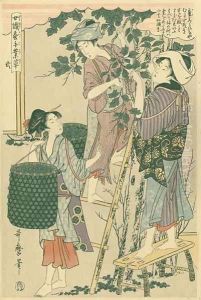





Picking mulberry leaves, no.2 from Joshoku kaiko tewaza-gusa, c.1800
-
About Reproduction
Discover the allure of art with our faithful reproduction of "Picking mulberry leaves, no.2 from Joshoku kaiko tewaza-gusa, c.1800", originally brought to life by the talented Kitagawa Utamaro. Unlike posters or prints, our hand-painted oil painting breathes an unique sense of depth and texture into your space. Every detail, every stroke, and every texture is meticulously recreated, paying the perfect homage to Kitagawa Utamaro and his artistic vision.
Owning this piece is more than just decoration - it's a statement of your refined taste in art. Let the vibrant colors and intricate details of this replica serve as a daily reminder of the beauty in our world. Elevate your decor and appreciate the richness of art with our replica of this masterpiece.
-
Painting Description
"Picking Mulberry Leaves, No.2 from Joshoku Kaiko Tewaza-gusa, c.1800" is a notable woodblock print by the esteemed Japanese artist Kitagawa Utamaro. Utamaro, who lived from 1753 to 1806, is celebrated for his bijin-ga (pictures of beautiful women) and his keen ability to capture the subtleties of human expression and the elegance of feminine beauty. This particular work is part of a series titled "Joshoku Kaiko Tewaza-gusa," which translates to "Women Engaged in the Sericulture Industry." The series is an exquisite portrayal of the various stages of silk production, a vital industry in Japan during the Edo period.
"Picking Mulberry Leaves" specifically depicts women engaged in the initial stage of sericulture, where they harvest mulberry leaves to feed silkworms. The scene is rendered with Utamaro's characteristic attention to detail and his refined use of color and composition. The women are depicted in graceful poses, their garments flowing with delicate patterns that highlight Utamaro's mastery in textile depiction. The background, though simple, effectively sets the pastoral scene, emphasizing the rural and industrious nature of the activity.
Utamaro's work is distinguished by its ability to convey the beauty and dignity of everyday tasks, elevating the mundane to the level of fine art. His portrayal of women in "Picking Mulberry Leaves" is both respectful and idealized, reflecting the cultural values of the time while also providing a glimpse into the daily lives of women involved in silk production. The print is not only an artistic achievement but also a valuable historical document, offering insights into the socio-economic conditions and gender roles of Edo-period Japan.
The "Joshoku Kaiko Tewaza-gusa" series, including "Picking Mulberry Leaves," remains highly regarded in the study of Japanese art and culture. Utamaro's work continues to be celebrated for its aesthetic beauty, technical skill, and its ability to capture the essence of Japanese life and industry during his era.
-
Lead Time & Shipping
When you order this oil painting replica, it typically takes 2-3 weeks to paint. If the artwork is more complex, it might need a little more time to ensure the best quality. Once it's ready, we'll send you a photo for your approval. After you give the green light, we'll ship it to you for free.
-
Return & Refund
We believe in the quality of our hand-painted oil painting reproductions, and your satisfaction is our priority. If for any reason, you are not completely satisfied with your purchase, we offer a 45-day return policy. You can return your artwork within 45 days of receipt and receive a full refund. Please note that the artwork must be returned in the original packaging and in the same condition as it was received.





